Caring for geraniums (pelargonium) in the winter at home
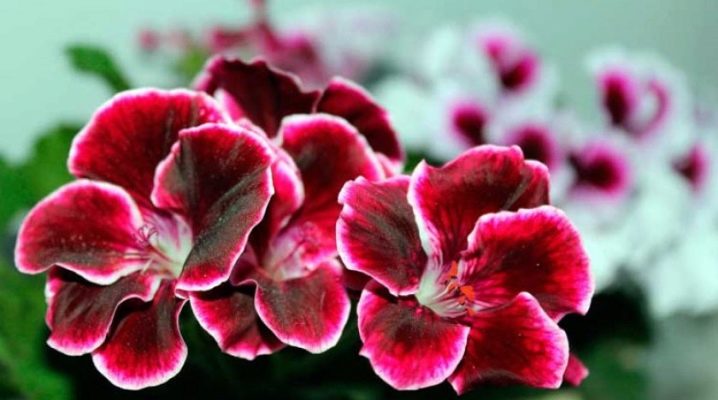
A flowering perennial called pelargonium is mistakenly called geranium even by experienced gardeners. However, geranium and pelargonium are different plants that come from the same genus - geranium. It is difficult to confuse these two flowers even in appearance, but from someone's light hand the second name is firmly attached to pelargonium - geranium. Friends, there is no need to confuse these plants, because they have a different structure of leaves and the shape of peduncles.
The plant that we are used to seeing on our windows, blooming in globular inflorescences with a variety of color shades, is called pelargonium.
True geranium is a cute and modest plant, it has blue single flowers, and you often saw it among meadow grasses, but you really could not think that this is a real geranium. But let's not be strict with our amateur gardeners and agree to understand that when they tell us about geraniums, they still mean pelargonium. In our article, we also sometimes allow ourselves to call pelargonium geranium.

Peculiarities
Pelargonium (indoor geranium) is native to the southern regions of the African continent. It quickly became one of the favorite plants of flower growers for its beauty during flowering. Breeders never cease to amaze us with the variety of varieties and colors of this plant. - more than three hundred species have already been bred, and this is not the limit, since every year we notice the appearance of new varieties of this perennial.
Like most heat-loving plants, in winter, pelargonium requires rest, thanks to which the plant will gain strength next summer and will be able to delight you with its flowering again.
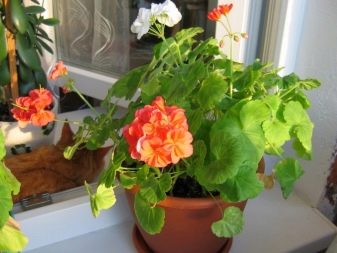
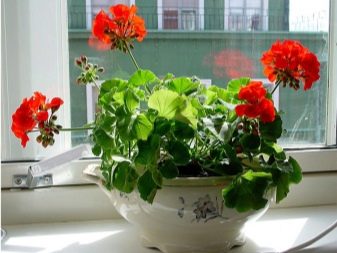
In January or February, pelargonium can be propagated by planting seeds in the ground. And although this is a rather troublesome business, it is worth it - the result will be a bush adapted to your conditions with the color that you chose when purchasing planting material. The seeds are sown in wet soil or on a peat tablet, they do not need to be deeply buried - a maximum of 5 millimeters. Next, the seeds are covered with a film and left to germinate in a warm and well-lit place. At the stage of the appearance of the third leaf, young plants can already be planted separately.
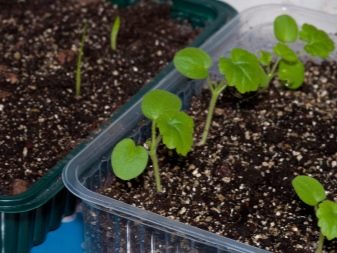
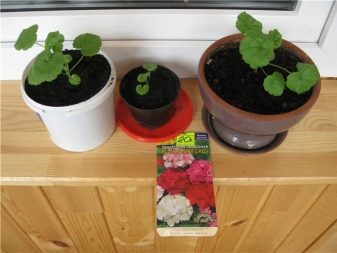
It is not forbidden to plant pelargonium in winter with the help of cuttings that remain after pruning. The stalk should have several leaves and have 2-3 living "dormant" buds. The finished cutting can be left in water until the roots appear, or immediately, after treating the cut with charcoal powder, plant it in the prepared substrate. To speed up the rooting process, create a small greenhouse - cover the stalk with a transparent jar.

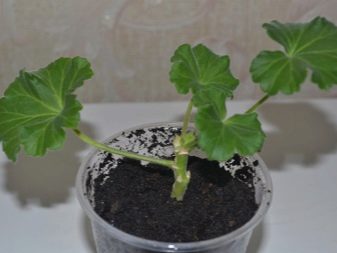
The necessary conditions
In order for pelargonium to feel comfortable in your apartment, you need to properly care for it. In winter, pay attention to the following points.
- Air temperature and humidity - from February to the end of March, the plant switches to winter mode. At this time, pelargonium does not bloom and its growth slows down. In winter, a perennial does not need frequent watering and feeding, and the air temperature should be no higher than + 15 degrees Celsius.
Overwintering pelargonium does not tolerate dry air well, for this reason it must be moved to a cool place, away from central heating batteries, or a jar of water should be placed on the windowsill next to the pot to evaporate moisture.
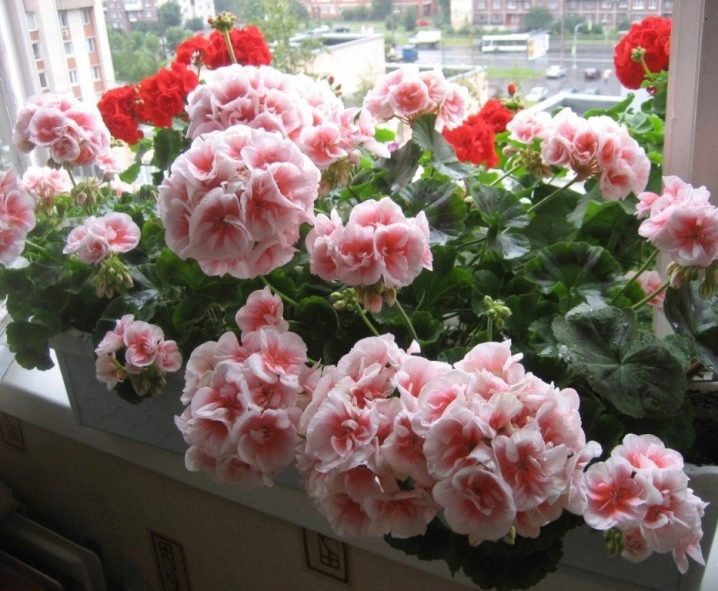
- Lighting mode - the plant loves bright diffused light, the duration of exposure to the flower should be at least 12 hours per day. If the daylight hours in your climatic conditions are much shorter, then pelargonium will need to be artificially illuminated using special lamps of the ultraviolet spectrum. Such a lamp should be placed at a distance of 10-12 centimeters from the flower, and the light should fall on it from above.
- Watering - during the dormant period, the flower does not need abundant watering. Watering pelargonium is best 3-4 times a month, in moderation, and it is best done in the afternoon. If the room is hot, watering is done when the upper part of the earthen coma is dry. Excess water must be immediately drained from the pan, since the roots of the flower can rot during stagnant water.
It is possible to feed the plant in winter, but if it is very warm in the apartment, then it is better not to do this, since there is a danger that the shoots of the flower will stretch out strongly. And in cool conditions, the plant is fed with a nitrogenous composition, adding it no more than once a month. It is correct to apply fertilizer when feeding only after preliminary watering.
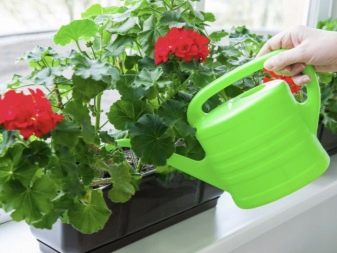
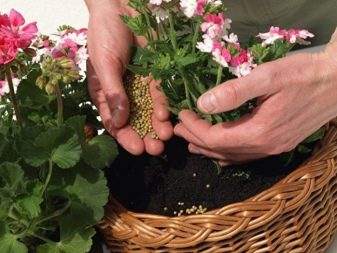
Pruning - with the aim of early awakening of the flower in February or early March, it is pruned last year's shoots. After pruning, the plant releases new shoots with the arrival of spring, and with them flower stalks. Some types of pelargonium can bloom 2-3 months after pruning, while other varieties need six months to recover from stress. The trimming procedure must be performed with a sterile instrument, and the cut sites must be treated with crushed charcoal. Shoots are shortened to a height of 10-15 centimeters above ground level, leaving 6-7 leaves and 3-4 living buds on each.

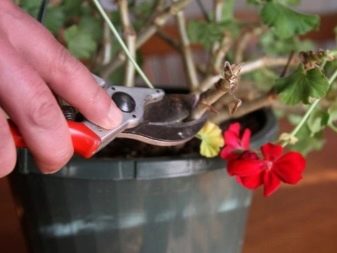
If the pelargonium is still young, then it is not cut off, but the upper points of growth of the shoots are pinched. In addition, during the entire winter period, all yellowed leaves and wilted peduncles must be promptly removed from the plant.
Caring for pelargonium at home during the rest period is different from the procedures that must be performed in the spring. Therefore, in March, the irrigation, illumination and top dressing regime will need to be changed.
How to make it bloom?
In order for your pelargonium to bloom profusely in the spring you can use the following guidelines:
- be sure to create a dormant mode for the plant in the winter and prune;
- in spring, the topsoil 3–5 centimeters thick must be replaced with a new one;
- as soon as the buds of the pelargonium have formed, do not rearrange, move or turn the pot in order to avoid dropping them;
- fertilizing well stimulates flowering, consisting of a solution of 1 tablespoon of wood ash, diluted and infused in 1 liter of warm, settled water - the finished component is again diluted with water and a weak solution is introduced under the roots of the flower;
- after the peduncles have formed on the pelargonium, you need to pinch the tops of all young shoots so that the plant's forces are realized for flowering, and not for the growth of foliage;
- an impetus for flowering for a plant can also be its annual spring transplant with the replacement of the soil substrate, after which the flower is not fed for 1–2 months.
If your green pet does not want to please you with flowering, you can take drastic measures. For this, pelargonium is planted from a pot in open ground conditions. This can be done in late spring or early summer, when a stable above-zero temperature has settled, and there is no threat of unexpected frosts. All summer long, your beauty should grow in the open air, and in the fall she is again transplanted into a pot and taken home for the winter.Such a shocking change of place will force the pelargonium to bloom to continue its kind.

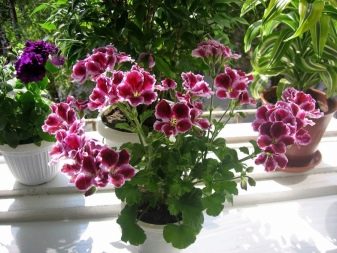
Can I transplant it?
In winter, pelargonium, as a rule, is not transplanted, since during the dormant period, planting in a new container will cause her stress. Transplanting geraniums should be taken care of in advance, and it is better to do this in the spring or before the onset of winter.
When geranium has undergone any disease or invasion of insect pests, you can transplant a flower in order to prevent its death at any time. However, it is worth remembering that the plant tolerates this measure worst of all during flowering and during the winter months.
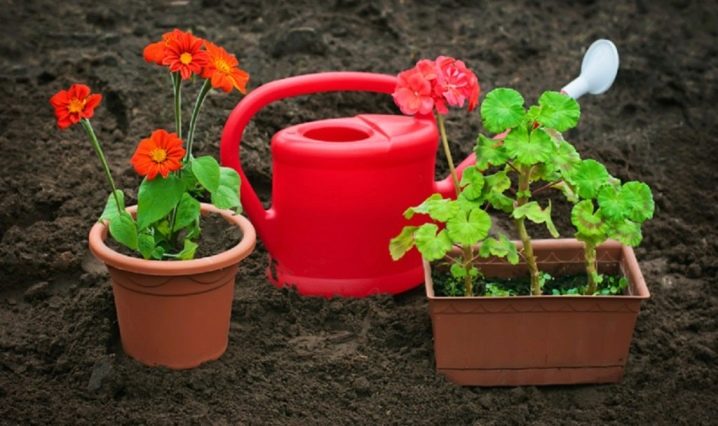
Possible problems and solutions
Growing pelargonium at home, you may encounter some problems that require urgent measures, otherwise the plant will die.
- Leaves turn yellow and fall - the reason may be finding a pot with a plant in a draft or dry and excessively warm air. Eliminating these factors will help save the flower.
- Pelargonium leaf dries up - in healthy plants, old leaves die off and this is not a disease. But if the leaf dries at the edges, and remains green in the middle, this indicates that the flower does not have enough nutrients. To preserve indoor geranium, it needs to be fertilized with mineral fertilizers.
- The flower withers in a pot, its trunk turns black - the reason for this was the gray rot. To save the plant, you urgently need to prune it and transfer it to another pot.
- Leaves curl strongly around the edges - this indicates that the plant is infected with bacteria through the soil. Pruning and transplanting into disinfected soil can help correct the situation, in addition, the flower must be treated with Oxyhom; if you do not take action, the plant dies.
- The plant is very elongated, does not bloom - this is a symptom of a lack of illumination, even on the windowsill there may not be enough light for the plant and it needs to be supplemented with a phytolamp.
- Some of the buds on the peduncles have dried up - most likely, you began to move the flower pot at the time when it was picking up flower stalks. The plant does not like this and drops the buds.
- Pelargonium stopped growing, turned yellow entirely - the flower disappears due to root rot. The reason may be waterlogging of the soil. Excision of the affected roots and transplantation into a new soil substrate is required. Some of the shoots must be cut off, leaving the buds of growth.
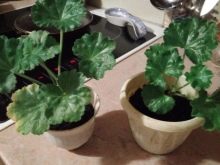
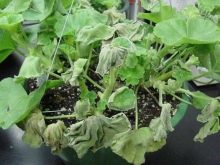
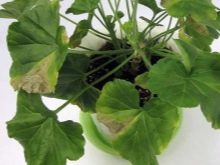
Pelargonium is rarely attacked by insect pests - this is due to the fact that they are deterred by the essential oil secreted by the plant. However, this situation can still happen to your green friend.
- Mite - insects are grouped on the reverse side of the leaf, as they eat the leaf plate, sparse small areas are formed on it. Cleaning with soapy water or spraying with insecticides will help remove the tick.
- Thrips - you will notice their appearance by the deformation of young shoots and leaves. If you turn the leaf over, then there will be growths on it with a cluster of insects. Thrips also damage flower petals, forming brown spots on them. Thrips choose places near the flower stamens as a breeding site. To cope with this pest will help multiple treatment of the plant with "Fitoverm", "Aktara" and other similar means.
- Whitefly - a small insect with white wings lays larvae on young shoots and leaves, feeding on plant juices. The larvae are grouped on the back of the leaf. In the process of vital activity, the larvae secrete a sticky substance, while the leaves turn yellow and curl. To combat whitefly, drugs "Aktara" and "Confidor" are used.
To avoid the disease of pelargonium in winter, you need to observe the regime of humidity, temperature and watering. Before carrying out any transplant, the soil must be decontaminated. Pruning should be done clean and using sterile instrumentation.
You can learn more about the features of growing pelargonium in the following video.

























The comment was sent successfully.